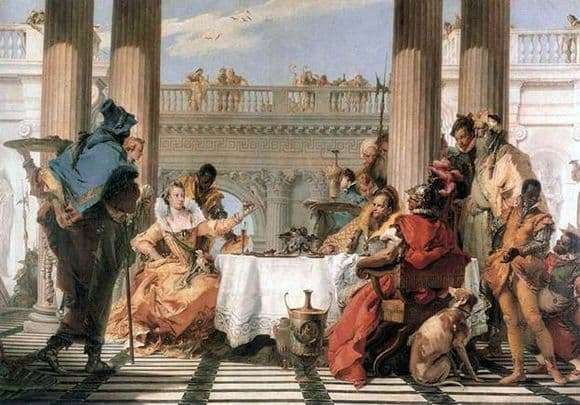
From a young age, the artist Giovanni Baptiste Tiepolo felt an irresistible craving for the history of the world. He read many works about the life of people in the past, swallowed piles of works of art on this subject. So the plot of his masterpiece “Pir Cleopatra” Tiepolo took from the textbook writer Pliny Art. In the book Natural History, the Roman Pliny reflected many interesting cases.
In his writings, he paid much attention to the queen of ancient Egypt, the enchanting Cleopatra. According to the available data, the ruler was incredibly rich. She owned a huge amount of gold, jewelry, valuable items. The highlight of her collection were 2 pearls that had gigantic sizes. From them the queen ordered to make earrings.
Once, a gambling Cleopatra started a dispute with her beloved, the famous military commander of Rome, Mark Antony. The woman claimed she was able to spend a large amount during a meal. The ruler was helped by a natural cunning and a sharp mind. Cleopatra poured some wine vinegar into a glass, and then threw one of the stunning pearls there. When the decoration disappeared, she gladly drank the resulting drink. Another version says that she swallowed the earring whole. One way or another, but the victory went to Cleopatra.
It was this story that served as the plot for the Tiepolo picture. The plot is made in warm, soft shades. Details are traced subtly and scrupulously. At the moment, the picture, dated 1743-44 years, is in the National Museum of Melbourne.
Description of the painting by Giovanni Tiepolo “Pier Cleopatra”







